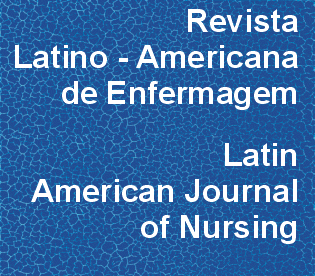Assessment of nursing care using indicators generated by software
DOI:
https://doi.org/10.1590/0104-1169.0177.2547Abstract
OBJECTIVE: to analyze the efficacy of the Nursing Process in an Intensive Care Unit using indicators generated by software. METHOD: cross-sectional study using data collected for four months. RNs and students daily registered patients, took history (at admission), performed physical assessments, and established nursing diagnoses, nursing plans/prescriptions, and assessed care delivered to 17 patients using software. Indicators concerning the incidence and prevalence of nursing diagnoses, rate of effectiveness, risk diagnoses, and rate of effective prevention of complications were computed. RESULTS: the Risk for imbalanced body temperature was the most frequent diagnosis (23.53%), while the least frequent was Risk for constipation (0%). The Risk for Impaired skin integrity was prevalent in 100% of the patients, while Risk for acute confusion was the least prevalent (11.76%). Risk for constipation and Risk for impaired skin integrity obtained a rate of risk diagnostic effectiveness of 100%. The rate of effective prevention of acute confusion and falls was 100%. CONCLUSION: the efficacy of the Nursing Process using indicators was analyzed because these indicators reveal how nurses have identified patients' risks and conditions, and planned care in a systematized manner.Downloads
Download data is not yet available.
Downloads
Published
2015-04-01
Issue
Section
Original Articles
License
RLAE’s authorship concept is based on the substantial contribution by each of the individuals listed as authors, mainly in terms of conceiving and planning the research project, collecting or analyzing and interpreting data, writing and critical review. Indication of authors’ names under the article title is limited to six. If more, authors are listed on the online submission form under Acknowledgements. The possibility of including more than six authors will only be examined on multicenter studies, considering the explanations presented by the authors.Including names of authors whose contribution does not fit into the above criteria cannot be justified. Those names can be included in the Acknowledgements section.
Authors are fully responsible for the concepts disseminated in their manuscripts, which do not necessarily reflect the editors’ and editorial board’s opinion.
How to Cite
Assessment of nursing care using indicators generated by software . (2015). Revista Latino-Americana De Enfermagem, 23(2), 234-241. https://doi.org/10.1590/0104-1169.0177.2547



